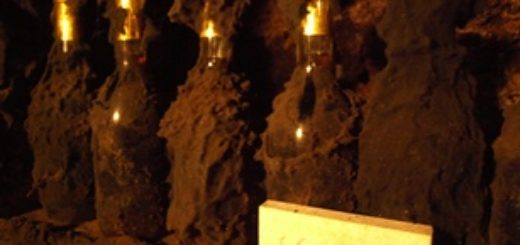The magic of Tokaj
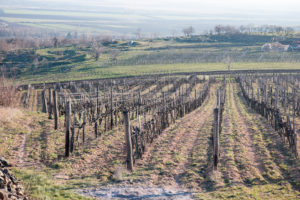
History
The Tokaj Wine Region has a history stretching back centuries. The first surviving document mentioning “asszú grape wine” is dated 1571. The first classification of vineyards was done in 1732 by Matolai. In 1737 Tokaj became the first delimitation of a wine region in the world declared by the king of Hungary, Charles III; thus the name Tokaj became an official appellation. Between the 17th and 19th centuries Tokaji Aszú became “the wine of kings and king of wines” (Louis XIV). Tokaji was the favourite drink of Peter the Great, Catherine the Great, Frederic II of Prussia; the nectar inspired artists Goethe, Voltaire, Schubert. Between 1889 and 1892 the phylloxera plague caused havoc; this insect damaged the roots of the vines that led to the destruction of the Tokaj vineyards. Between 1945 and 1989 Hungary was a communist state, so the production and bottling of Tokaji wines was a state monopoly. In 1990 Hungary became a democratic state and the “Renaissance” of the region and privatisation started. The first foreign investors arrived in the wine region: AXA Millésimes, GMF, GAN, Vega Sicilia. With their assistance the reestablishment of old historical estates began: Disznókő, Hétszőlő, Oremus, Pajzos, Degenfeld. At the same time local high quality producers started their own production, for example István Szepsy. The year 1995 saw the establishment of Tokaj Renaissance, the Union of Classified Vineyards of Tokaj. New wineries and a new young generation of smaller producers appeared. In 2000 the Confrérie de Tokaj was refreshed and received fresh impetus again in 2012. In 2002 Tokaj Wine Region was declared the UNESCO World Heritage title in the “cultural landscape” category as the “Tokaj Historical Wine Region”.
Location of the Wine Region
It is situated in north-eastern Hungary; around 1o north of Dijon and 30o south of the Rhine vineyards. There are 5500 hectares of vineyards with only white grape varieties. (but the capacity of the whole Wine Region would be 11 000 hectar). The wine region, which encompasses 27 towns and villages, is bordered by the Zemplén Mountains to the north, the River Bodrog to the east and the Great Hungarian Plain to the south. The vines are on the southern and eastern slopes of the foothills of Zemplén Mountains (150 – 300 m above sea level), next to the Tisza and Bodrog rivers.
Tokaj, the centre of the wine region
The wine region is named after the town of Tokaj, the historic commercial centre of the wine region set at the confluence of the rivers Bodrog and Tisza. The first document mentioning it is dated for 1067, in the founding letter of the abbey of Százd. The golden age of Tokaj is dated between the 17th and 18th centuries when Polish and Russian collectors abounded in the city. Tokaj is situated at the foothill of Tokaj Hill, the youngest and the tallest volcanic butte (512 metres high), that is emblematic of the region.
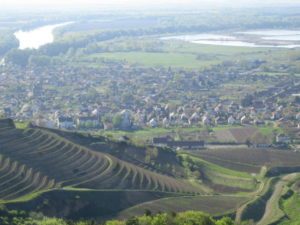
The climate
The continental climate is characterised by hot and dry summers, cold winters and particularly long, warm autumns. Precipitation is around 520-550 mm per year. The microclimate is exceptional with humid, foggy periods and alternating warm spells in autumn which is ideal for the development of noble rot and shrivelling of grapes.
Without this foggy period it should be ideal for great white wines, because there are nice acids, but in the same time the grapes ripening. But thanks to the humidity the botrytis cinerea flourishes. Then the long Indian summer and the continental sunny October and November helps to the grape to survive and to be noble roted instead of being grey roted. After the grapes start shrivelling.
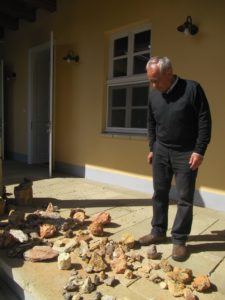
István Szepsy’s collection of different soils
Soil
The volcanic bedrock formed 8-10 million years ago (rhyolite, tufa, etc.) with volcanic clay soil or yellow loess, is a wind-blown silt.
The value in Tokaj is in the soil. The unique character derives from the soil; more than 400 volcanos were once active here. This fact has incredible results which offer us a great opportunity. A very strong soil character is typical of the wine region.
In the Zemplén Mountain the basic of the soil is rhyolite. The volcanic bedrock formed 8-10 million years ago (rhyolite, andesite, dacite, and their tufas) with volcanic clay soil or yellow loess, is a wind-blown silt. The volcanic afterworks gave different minerals to the soil like zeolite, kaolinite, bentonite, perlite, hydro quartzite, gyöngykovaföld/ diatomaceous, iolite…The subsoil is mostly andesite and riolit, on the top we can find nyirok and loess.
There are two parts of the region: Tokaj Mountain, which is covered by loess and the other parts of the Zemplén Mountain that are covered with volcanic stones. All of this indicates that the Tokaj Wine Region was always a unique wine region.
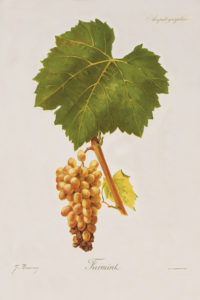
Furmint is the most famous and most commonly grown grape in Tokaj.
Grape varieties
It is part of the tradition that we selected our autochton varieties several hundred years ago. Between 1892 and 1908 the Tokaj Wine Region was replanted with the three main varieties we have today: Furmint, Hárslevelű and Muscat blanc a petit grains. Furmint is the noblest and most ancient Tokaj variety. Around 65 % of the wine region is planted with this variety. It is medium sized, with compact bunches. As it is a closed wine region a total of 7 varieties are permitted; all of them are white. Besides the three main varieties there are Zéta, Kövérszőlő Kabar and Gohér.
The winemakers try to subsume their work to the terroir and the nature. That is why so many of them started work by selecting the single vineyards, to get to know our single vineyards once again, to bring their unique character to the market.
The first classification derives from Matolay János from the age 1723. He classified the vineyards after the merchant’s judgements, he used first, second and third classes. He signed total 418 single vineyard, among them first classed 54 mostly in the southern part of the region.

